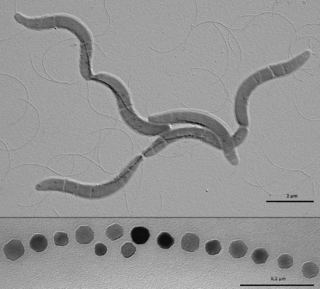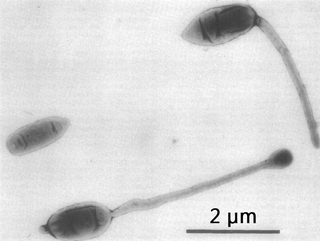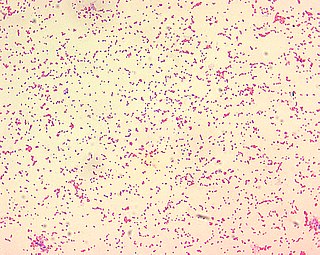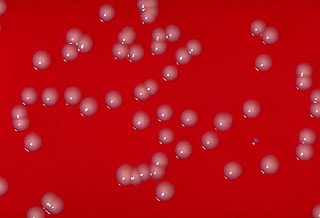| Devosiaceae | |
|---|---|
| Scientific classification | |
| Domain: | Bacteria |
| Phylum: | Pseudomonadota |
| Class: | Alphaproteobacteria |
| Order: | Hyphomicrobiales |
| Family: | Devosiaceae Hördt et al. 2020 [1] |
| Genera [2] | |
| |
| Synonyms | |
| |
Devosiaceae is a family of Alphaproteobacteria.
| Devosiaceae | |
|---|---|
| Scientific classification | |
| Domain: | Bacteria |
| Phylum: | Pseudomonadota |
| Class: | Alphaproteobacteria |
| Order: | Hyphomicrobiales |
| Family: | Devosiaceae Hördt et al. 2020 [1] |
| Genera [2] | |
| |
| Synonyms | |
| |
Devosiaceae is a family of Alphaproteobacteria.
The currently accepted taxonomy is based on the List of Prokaryotic names with Standing in Nomenclature (LPSN). [2] The phylogeny is based on whole-genome analysis. [1]
| |||||||||||||||||||||||||||||||||||||||||||||||||

The Rhodospirillales are an order of Pseudomonadota.
The Phyllobacteriaceae are a family of bacteria. The most common genus is Mesorhizobium which contains some of the rhizobia species.
The Aurantimonadaceae are a small family of marine bacteria.

The Hyphomicrobiaceae are a family of bacteria. Among others, they include Rhodomicrobium, a genus of purple bacteria.

The Methylobacteriaceae are a family of Hyphomicrobiales.

The Brucellaceae are a family of the Gram-negative Hyphomicrobiales. They are named after Sir David Bruce, a Scottish microbiologist. They are aerobic chemoorganotrophes. The family comprises pathogen and soil bacteria
The Nitrobacteraceae are a family of gram-negative, aerobic bacteria. They include plant-associated bacteria such as Bradyrhizobium, a genus of rhizobia associated with some legumes. It also contains animal-associated bacteria such as Afipia felis, formerly thought to cause cat-scratch disease. Others are free-living, such as Rhodopseudomonas, a purple bacterium found in marine water and soils. The strain Rhodopseudomonas palustris DX-1 can generate an electric current with no hydrogen production, a trait being explored in the development of the microbial fuel cell. The genus Afipia has also been found in the atmosphere, where it uses methylsulfonylmethane as a carbon source.
The Sphingomonadales are an order of the Alphaproteobacteria.
Erythrobacteraceae is a bacterium family in the order of Sphingomonadales.
Stappiaceae is a family of Alphaproteobacteria.
Tepidamorphaceae is a family of Alphaproteobacteria.
Pleomorphomonadaceae is a family of Alphaproteobacteria.
Parvibaculaceae is a family of Alphaproteobacteria.
Methylorubrum is a genus of bacteria from the family Methylobacteriaceae.
The Sphingosinicellaceae are a family of the Sphingomonadales.
The Stellaceae are a family of bacteria from the order Rhodospirillales.
The Thalassobaculaceae are a family of bacteria from the order Rhodospirillales.
The Rhodovibrionaceae are a family of bacteria from the order Rhodospirillales.
The Azospirillaceae are a family of bacteria from the order Rhodospirillales.

The Mycobacteriales are an order of bacteria.